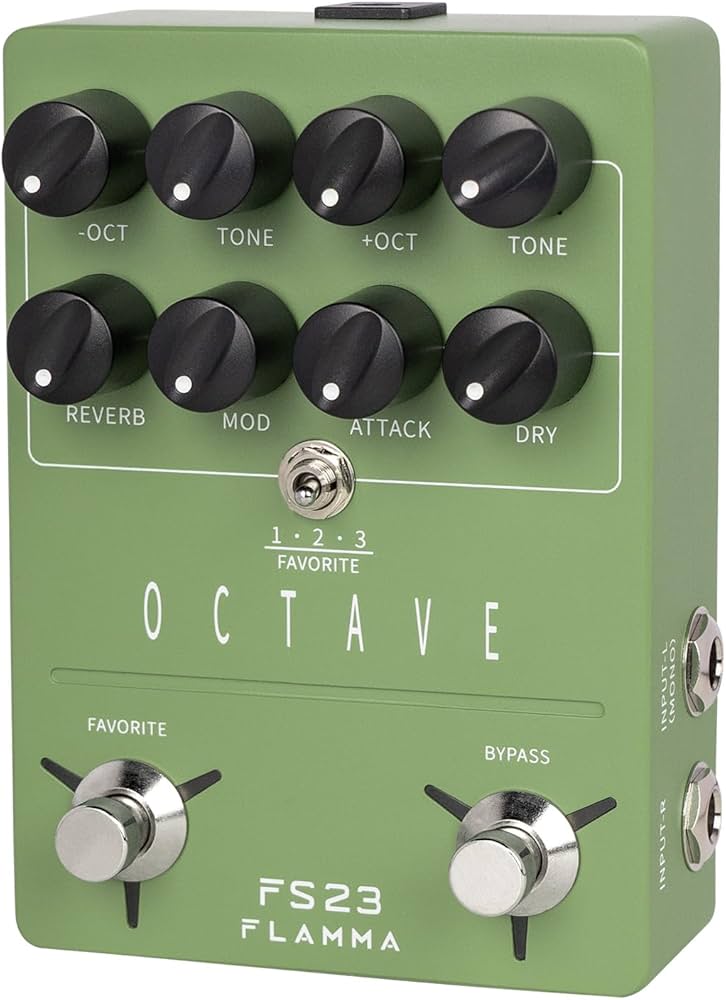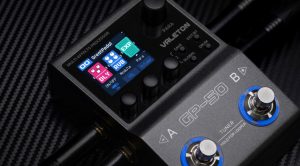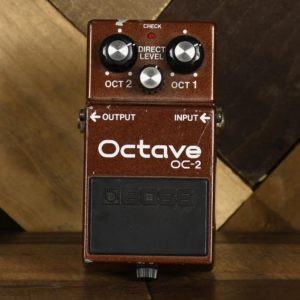A Versatile Stereo Octave Pedal for Modern Bassists
Disclaimer: This pedal was kindly provided by Flamma Innovation for the purpose of this review. However, this does not influence our opinion or the content of our review. We strive to provide honest, unbiased, and accurate assessments to ensure that our readers receive truthful and helpful information.
Introduction
Octave pedals have always been part of the bass player’s secret sauce—whether to thicken a groove, add sub-bass heft, or create soaring solo textures. The Flamma FS23 steps into a crowded field with a promise: stereo operation, octave-up and octave-down blending, plus onboard reverb and modulation. At first glance, it might look like another multi-function box trying to do too much—but after a few sessions, it becomes clear this little green pedal has more depth (literally) than expected.
TL;DR
A surprisingly powerful and versatile octave pedal with stereo capabilities, solid tracking, and ambient-friendly extras. The lower octave is clean, full, and modern—more EBS than OC-2—while the upper octave, though thin on its own, comes alive when blended with reverb and modulation. Add solid build quality and presets, and the FS23 punches far above its price point.

Sound & Performance
Low Octave
Let’s start where most bassists live—the lower octave. The FS23 delivers a deep, smooth, and clean low octave that avoids the synthetic “electronic” vibe of a Boss OC-2 or vintage-style analog unit. Instead, it’s closer to the EBS Octabass territory: round, full, and modern. There’s no sub-rumble mushiness, just a tight, defined low end that tracks well even on the lower strings.
Tracking, in fact, is excellent for the price. Like any octave pedal, it benefits from clean technique and a strong input signal—so running a compressor before it helps tremendously. When played cleanly, the FS23 keeps up without glitching or wobbling.
High Octave
The upper octave is thinner and more digital-sounding—nothing surprising there—but it becomes genuinely useful when blended with the dry signal or the sub-octave. This mix brings out some surprisingly expressive tones perfect for solos or ambient layering. The key is balance: too much upper octave alone sounds brittle, but mix it right, and it opens up new textures.
Reverb & Modulation: The Unexpected Stars
Initially, the reverb and modulation controls seemed like gimmicks—nice to have, but unnecessary on an octave pedal. Turns out, they’re not gimmicks at all.
The reverb is especially bold—huge, cinematic, and capable of going completely over the top if you let it. Paired with the upper octave, it creates shimmering ambient soundscapes that push the FS23 beyond the typical “octaver” role. Add a touch of modulation, and you’re in synth pad territory. For players who enjoy textural, atmospheric sounds, this is where the pedal really earns its stereo badge.
Tone Controls & Presets
Each octave has a tone knob, though their range is subtle. They shape the sound slightly darker or thinner rather than dramatically changing the character. The presets, on the other hand, are a game-changer. Being able to store and recall settings makes it easy to jump from a straightforward sub-octave groove to a massive ambient wash in seconds. For live players, that’s a big deal.
Build Quality
Physically, the FS23 feels solid. The metal chassis is rugged and road-ready, while the knobs—though plastic—have a nice tactile resistance and don’t feel cheap. It’s compact, lightweight, and the layout is intuitive. In short, it’s gig-proof.
Pros & Cons
Pros
- Clean, modern low-octave tone (no synth mush)
- Excellent tracking for the price
- Reverb and modulation add real creative value
- Presets make it stage-friendly
- Sturdy build and smart layout
- True stereo operation
Cons
- Upper octave can sound thin on its own
- Tone knobs have limited range
- Reverb can get overwhelming if not dialed carefully
FAQs
Q: How does it compare to the Boss OC-5 or EBS Octabass?
A: The FS23 leans closer to the EBS sound—clean, tight, and modern—rather than the vintage warmth of the OC-5. It’s also more versatile thanks to the reverb/mod section and stereo operation.
Q: Can it track low B on a 5-string?
A: With a clean input and steady playing, yes—it holds its own surprisingly well even below the E string.
Q: Is it good for synth-style bass sounds?
A: Absolutely. Pair the sub-octave with reverb and modulation, and it delivers lush synth-like textures.
Q: Does it handle guitar or synth inputs?
A: Yes, though it’s clearly voiced with bass in mind. Guitarists may find the high octave more appealing than bassists do.
Conclusion
The Flamma FS23 is a pleasant surprise. It’s not just another budget octave pedal—it’s a creative platform for bassists who want both reliable octave tones and ambient possibilities in one box. The clean low end is solid enough for everyday use, and the lush reverb/mod combo turns it into an unexpected source of inspiration.
While it won’t replace a boutique analog octaver for vintage tones, it offers far more versatility and a unique sonic identity. For the price, the FS23 is an easy recommendation for bassists looking to explore beyond the usual octave territory.
Get the Flamma FS23 on Amazon right now!
If you liked this gear, make sure to also check:
- Joyo Scylla Compressor – Smooth compression for consistent, punchy bass tone.
- Joyo Tidal Wave – Vintage preamp based on the Sansamp circuit.
- Joyo Monomyth Bass Preamp – Versatile preamp with EQ shaping and DI output.
- Joyo Double Thruster – Dual-drive section for layered grit and boost.
- Flamma Innovation FB200: Feature packed effects strip for bass.
- M-VAVE Cube Baby Bass: Pocket Size Rig for Practice and Portability





